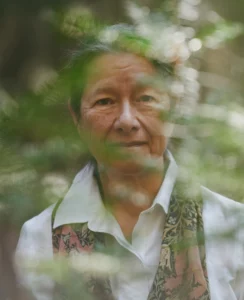Share this Collection
1 Citation in this Annotation:
Annotated by:
Cristina Fusco on The Mushroom at the End of the World
20 May, 2025

Anna Tsing unravels stories of hidden ecologies emerging around the matsutake mushroom on different continents, unveiling the mushroom as an emotional anchor, a commodity, and a sign of resurgence in disturbance-based ecosystems. These disobedient ecologies, arising from deteriorated grounds, fascinate me as an alternative way of thinking about the relationship between non-human beings, architecture and territory. Their spontaneous arrival challenges idealised notions of nature and landscape. As architects and planners, how can we foster life in our increasingly urban landscapes? The mushroom and its interconnected stories show how the boundaries between people, urban metabolisms and non-human life worlds are diffuse and entangled.
“Through their ability to nurture trees, matsutake help forests grow in daunting places. To follow matsutake guides us to possibilities of coexistence within environmental disturbance.”
The matsutake mushroom grows in post-industrial North American forests, thriving in landscapes shaped by ecological disruption. Architecture and landscape strategies often confine nature to designated reserves. Living beings, however, exist across these abstract boundaries—how to accommodate this liveliness? It reminds me of spontaneous vegetation found in cities, where vivacious plants settle in tiny openings of pavements, walls, and other surprising corners of the urban fabric. These insurgent ecologies appear on the edges of larger landscape bodies, such as forests and meadows, as well as along infrastructures, railways and roads. They also proliferate within the city, mostly in areas where urban planning is neither expecting nor inviting them. They prosper in difficult conditions and regular disturbances, as human activity shapes them and the city’s maintenance eventually removes them. This spontaneity might just inform and guide us towards an ecological approach to architecture that integrates living entities in its structure.
“Neither the fungus nor the plant can flourish without the activity of the other.”
In its rhizomatic structure, the book takes us along different journeys and encounters by following the matsutake mushroom. Through these tales, the book inspires a sense of hope and incites our imagination as life arises in unexpected spaces. The collection of stories shows a form of unintentional collaboration across scales, species, cultures, and production chains. Matsutake becomes an active agent, reuniting actors and processes while delineating their relationship. Anna Tsing motivates the reader to remain attentive and curious about new forms of life, especially regarding other ways of living together in the ruins of our human occupation. The story of the pine mushroom unveils a hidden network of collaboration between species, people, and informal economic systems, highlighting how the actions between human and non-human beings are deeply intertwined and connected to landscapes. Tsing describes a visit to the forest with foragers of different origins and their unique ways of moving through it, orienting themselves by considering their histories and perception. As the matsutake mushrooms grow below the surface, the quest to find them is a sensory experience. Attentive observation, smell, touch, memory, animal traces and movements in the forest—these alternative ways of noticing are rituals of connecting with this landscape, the matsutake mushroom, the pine trees, and all their mutual entanglements. This connection is vital for architecture, as we are also part of these living systems. The book invites us to explore diverse ways of designing environments, while celebrating difference and nurturing possibilities of unintentional encounters into architecture.
Take a moment. Sense, smell, look closely: what else is there?

Gilles Clément et Vincent Gravé. Un grand jardin. Paris: Cambourakis, 2016